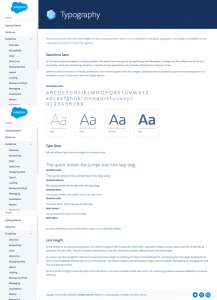Workplace culture, safety and equality is critical to running a successful call center. It shapes employee engagement and retention, it affects the perception prospective hires have about your company. And for call centers, which are plagued by some unfortunate statistics (74% of call center agents are at risk of burnout and there’s an average turnover rate as high as 30-45%) employee retention should be top of mind.
I’ve had jobs in some pretty different kinds of places. For some of my jobs, my coworkers really felt like a family. We were friends and worked as a team. In other jobs, I felt dreaded going into work every day, knowing that I couldn’t be fully myself there. In those jobs, I was quieter, kept to myself, and to be honest, was eager to leave them ASAP to find a new gig.
The day to day work as a call center agent can be taxing in itself. Why would an employee stick around if, on top of the hard work of the job, they feel out of place in the workplace as well?
As a manager, you aren’t just around to keep business going and guide your employee’s professional development. You also have to be an advocate for your call center culture and equality all while caring for the individual people you employ. Your agents aren’t robots — thank goodness! But this also means that it’s your responsibility to care for them. It’s time to get serious about diversity and inclusion in the workplace.
The Direct Impact of Equality in your Call Center
Creating an empathetic and safe culture for your employees requires that you wrestle through what inclusion and equality looks like in your call center. Some 87% of organizations around the globe claim diversity is a value or priority area for their companies. Focusing on inclusivity has a direct business impact. A study found that inclusive companies are 1.7x more likely to be innovation leaders in their field, and diverse companies are up to 35% more likely to outperform their competitors.
But while you’re hiring to include diverse perspectives and backgrounds, don’t neglect thinking through how to keep all of your employees safe and comfortable being themselves. Consider some of these actionable steps you should take as a manager to create equality in your call center for new hires and loyal employees.
Knowing the Problem
Before you can make an effort to improve call center equality, you have to test the waters and know the needs of your specific team. Every workplace is different. If your diversity training efforts are too vague and sweeping, what good will that really do for your individual employees?
When the work environment doesn’t feel totally safe, employees can intentionally hide important parts of themselves out of fear that their differences will expose them to negativity or consequences. This is known as “identity cover.” Employees who fear they won’t fit in — whether that’s because of their gender, religion, sexual orientation, socio-economic background, or generation — may attempt to hide behind what they believe are “acceptable” identities.
According to a report released by Deloitte, identity covering is a common occurrence in most workplaces with 61% of their respondents reporting that they’ve covered up at least one axis of identity.
This is difficult for you as a manager — whose hope is to help every employee feel included and wanted. How can you care for the employees who stay quiet about their discomfort? How can you know to reach out to an employee who is changing how they dress or speak just to fit in? Before taking action, take time to listen to your employees and know their needs.
1. Listen to your employees in 1:1s
Showing you care starts with listening and keeping open communication. Conversations about equality and identity can open up a lot of emotions. This may not be the time and place for a big sharing circle in the conference room. Start with asking your call center agents engaging questions in your 1:1s. Instead of using the time to purely track professional goals, feel free to make the time more personal.
Unsure of how to help an employee open up? Start with your own experiences. When have you compromised identity or personality for the sake of fitting in? When have you felt isolated in a workplace and what did you learn from that experience?
Vulnerability is important in a workplace. Just ask the queen of vulnerability — Brené Brown. She says that “vulnerability is the birthplace of innovation, creativity, and change. If you’ve created a work culture where vulnerability isn’t okay, you’ve also created a culture where innovation and creativity aren’t okay.” Open the door to more conversation so you can identify the personal and specific needs of your employees.
2. Educate your team
In order to maintain an inclusive workplace, a regular review of policies and practices needs to be a part of the fabric of your team. Your whole team should be accountable and educated on what it means to include others. It’s important to give your team the resources and training to help them contribute to a culture of safety.
Starting with onboarding, include educational resources in your training and coaching that holds your employees to becoming culturally competent. Using anti-bias and implicit bias training will help your team identify and prevent unconscious biases they may have. Include workshops to have open discussion about ways harmful behaviors or language can sometimes be communicated through microaggressions.
Words can be painful, and sometimes we may not even know it. Provide guides on what inclusive language looks like in your workplace. Train agents to be conscious of how they speak — both among themselves and to your customers.
Create spaces in your training where conversations about inclusion can happen naturally. Start a book club and have a monthly book that focuses on inclusivity and diversity. Let the book you’re reading together help you construct an educational framework. This also gives everyone on the team time to consider what they think or bring their own stories and perspectives to the table.
3. Manage conflict carefully
In a study conducted by Google on what builds success within a team, the highest-performing teams had a shared trait: psychological safety. This is the belief that you won’t be punished when you make a mistake.
Without psychological safety, teams struggle to practice innovation and create trust. After all, how can your employees feel free to be creative or express new ideas when they fear that leaders will misunderstand or scold them?
Conflict is natural in a workplace. Especially in contact centers, employees are often asked to work through challenges and puzzles side-by-side. According to the CPP Conflict Report, 85% of employees experience some kind of conflict, 29% of employees nearly constantly experience conflict and 27% of employees have dealt with some kind of personal attack arising from workplace conflict.
In a call center, there are naturally external stressors and, at times, your employees will get irritated with each other. It’s in these moments that people can lean toward hurtful language or behavior. As you consider creating psychological safety for all your employees, manage the conflict as a collaborator.
Work to find mutual outcomes by listening, anticipating reactions and areas of concern, and practicing empathy. Be particularly aware of those employees who already struggle to fit or may tend to hide their opinions and viewpoints. Provide spaces to build call center equality when dealing with conflict that allow for all employees to share openly.
Business & Finance Articles on Business 2 Community
(64)
Report Post







